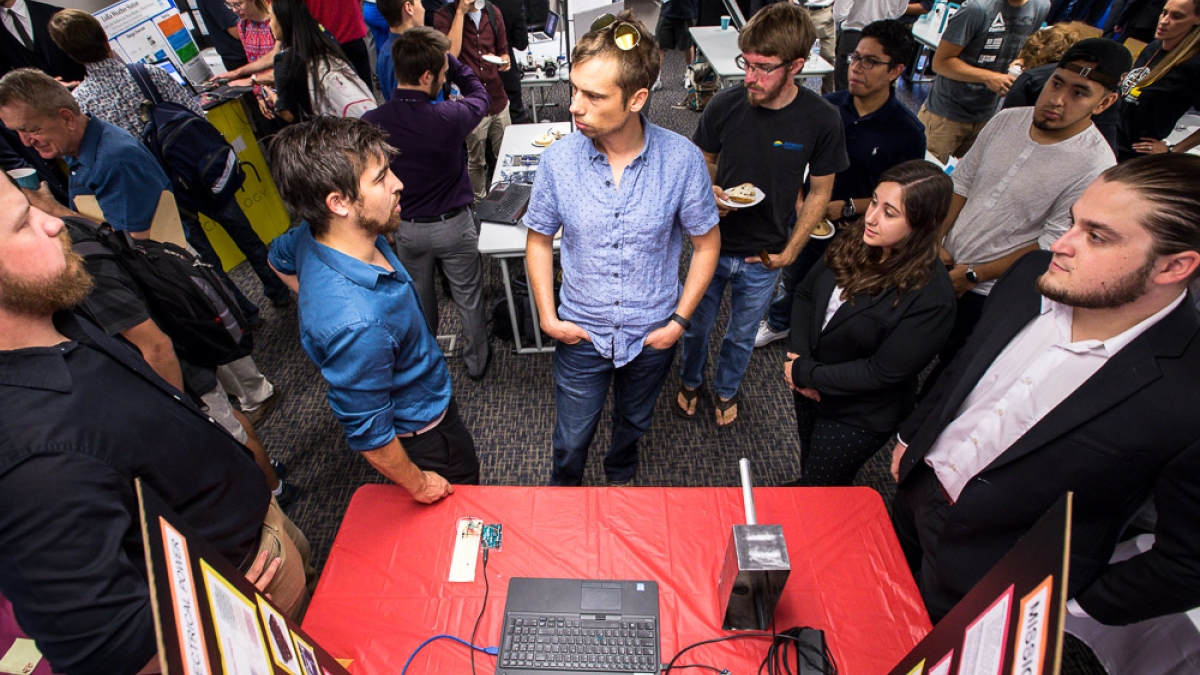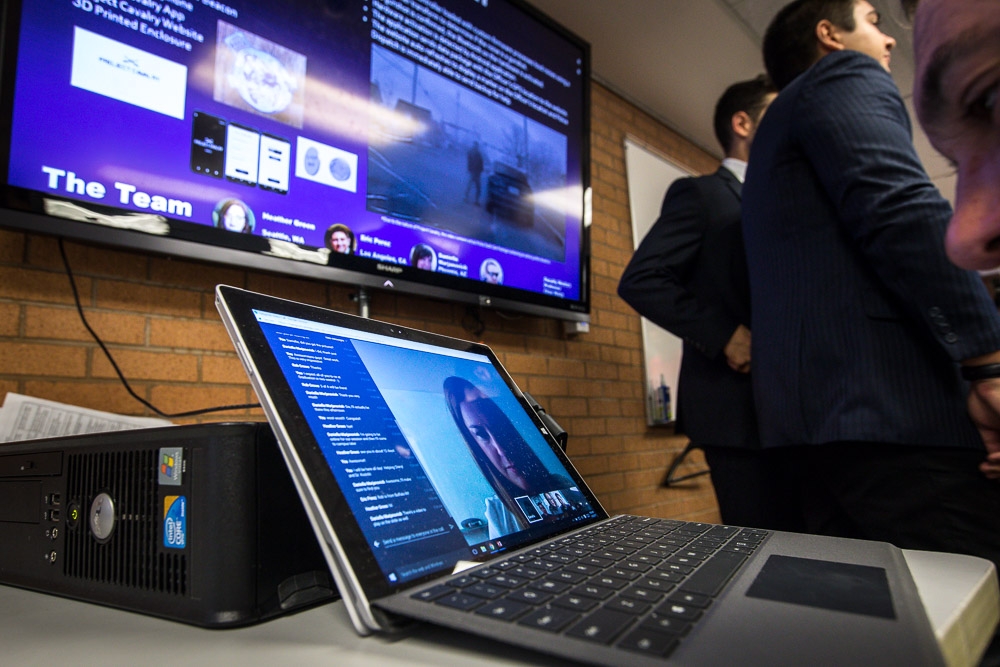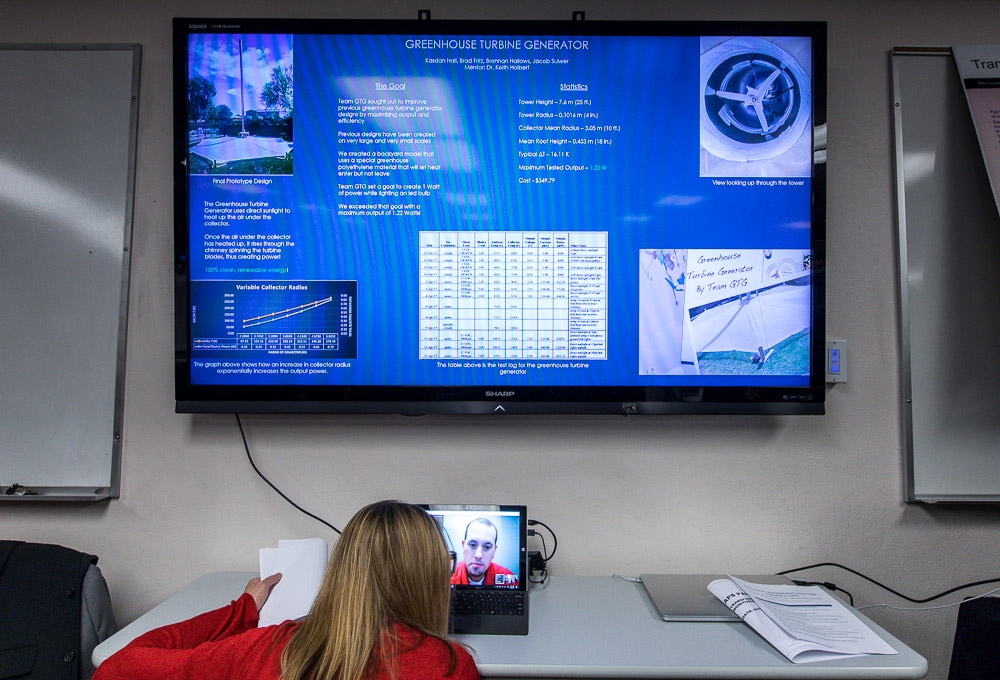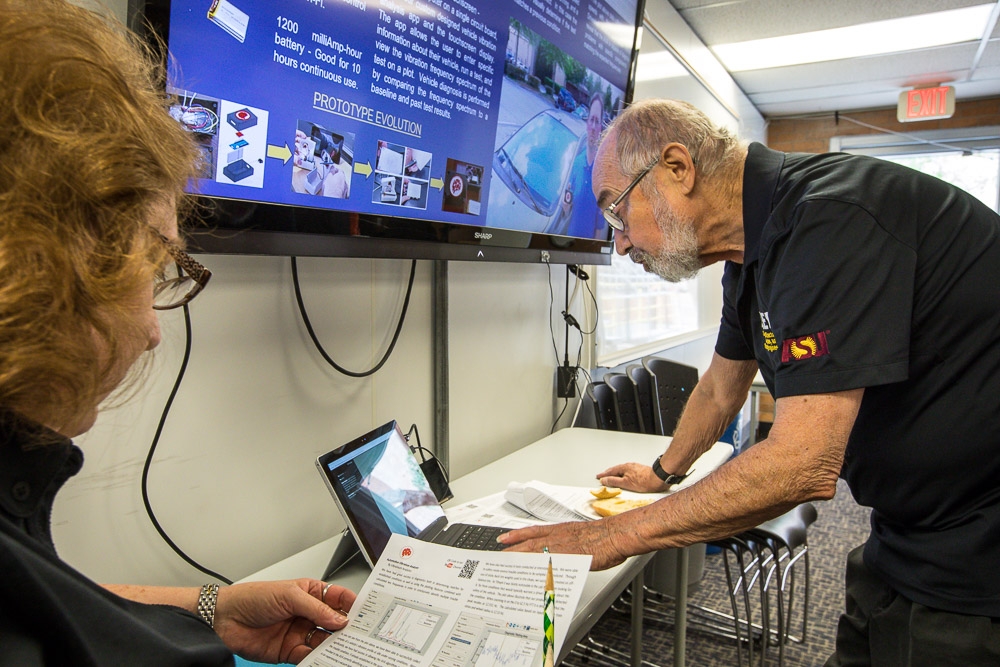Getting engineering capstone pitches perfect — online
ASU’s undergraduate degree in electrical engineering is the first accredited program that's completely web-based

Capstone presentations — the culmination of four years’ education in a project that demonstrates the breadth of hard-earned knowledge — are always nerve-wracking. Getting the display right, the demonstration without a hitch and the tie in a perfect Windsor knot all strain student nerves.
Now try doing it from 2,000 miles away.
Arizona State University’s undergraduate degree in electrical engineering is the first accredited program that is completely web-based. The first cohort of online students gave their capstone presentations Friday, along with all the other seniors.
The onliners (as they’re calling themselves) were easy to spot in the crowded room. Nobody stood around their display tables. Seventy-inch screens presented their projects. Team members interacted with visitors via videochat on laptops.
While hearing them over the hubbub in the room was difficult, their audio and video feeds worked well. (Next year, the onliners will be in a separate room.)
Team Cavalry presented the Calvary Band, a wearable device for police officers that detects the sound of a gunshot and automatically initiates a call for backup. Team members were in Seattle, Los Angeles, Phoenix and Lancaster, New York.
Heather Green, in Seattle, with her black cat on her lap, explained how they brought the project together literally coast to coast.
“Our team has met twice a week on Google Hangouts to update each other on our progress, issues and upcoming tasks to keep us on schedule,” Green said. “It's worked out really well! When we were fielding project ideas, our locations were something we kept in mind. (Team member) Rob (Crowe, in New York) thought of this idea initially, and it's been almost no issue to implement our design, even though the team is scattered. Companies do this sort of thing all the time now, and I think now that's going to be part of the college experience.”
Brennan Hallows, a senior in Price, Utah, was part of a team that built a greenhouse turbine generator. It uses direct sunlight to heat up air, which rises, spins a turbine and creates power. His team was spread between Iowa, Utah and two members in Surprise, Arizona.
The project was difficult, Hallows said, but they powered through it.
“We met multiple times a week,” Hallows said. “The project was constructed in Arizona. Me and Brad (Fritz, in Iowa) worked really hard on the design and calculations while the other two members did the construction and testing. It was a team effort that turned out successful.”
Because it is the first year remote electrical engineering majors presented their projects, there were hiccups.
“There have been a lot of challenges with today's presentation, but we expected the unexpected, because we're the first group of fully online engineering students to do this,” Green said. “There haven't been any real surprises; it seems unclear that the video embedded explains our project, and that the video needs to be played in order to get that explanation. I know (organizers) are talking about putting onliners in a separate room next time, so the background noise isn't so overwhelming to communication.”
Hallows said he realized his sales acumen dims with distance.
“The presentation is very difficult remotely,” Hallows said. “I am a much better salesman in person! It would be much easier to talk about the project in person, but ASU has done a very good job of making it as good as it can be from a remote location.”
The 120-credit-hour degree program includes core engineering courses and a minimum of 45 upper-division credit hours in specialty courses — including analog and digital circuits, electromagnetic fields, microprocessors, communications networks, solid-state electronics and electric power and energy systems. Lab work is done at home with mailed kits.
Top photo: Attendees listen to the presentation of Project Phoenix at the end-of-the-year Capstone Electrical Engineering Senior Design Projects on Friday. Project Phoenix designed a CubeSat system that can produce thermal images of major cities, to study their heat-island effect. Sixteen teams, half in the morning, presented their senior projects, with six of them being done by online students. Photo by Charlie Leight/ASU Now
More Science and technology

ASU planetary scientist to be inducted into the National Academy of Sciences
The National Academy of Sciences is inducting School of Earth and Space Exploration Director Meenakshi Wadhwa into the 2023 class of new members for her pioneering work in planetary sciences and…

Unlocking the potential of AI for homeland security
“Can we do what we're doing now cheaper, more efficiently, more effectively?” Adam Cox, director in the Office of Strategy and Policy at the Department of Homeland Security Science and Technology…

SpaceHACK highlights student solutions to environmental challenges, digital divide
By Adrianna Nine About 250 students from around the world convened online and at Arizona State University on March 22 for the ASU Interplanetary Initiative’s second annual SpaceHACK for…


